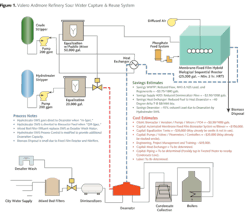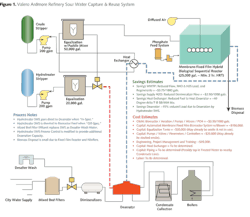Software-defined radio technology offers customizable solutions for wireless networks
For more than a quarter century, radio communications have been successfully replacing traditional hardwired communications in a variety of supervisory control and data acquisition (SCADA) applications. The water treatment industry is no exception.
The ongoing demand for plant efficiency, scalability and productivity can quickly become burdensome when it comes to a traditional hardwired communications system. Not only can hardwired systems be costly to install, but hardwired communications offer little in terms of overall future expansion.
Conversely, wireless technologies offer users a variety of possibilities for replacing and/or expanding existing hardwired communications. Real-time monitoring and control of tank levels, temperature, pressure, and pumps, as well as asset management, security and overall plant communications are all possible with a wireless network.
The challenge that users face after deciding to move to a wireless solution is selecting a system that will best meet their needs. Obvious network characteristics, such as network topology, system throughput, data interfaces, and cost of ownership are all important factors. However, there is another characteristic that is often overlooked: system reconfiguration.
The Issue
The majority of radio solutions in the marketplace today are hardware-based, and more often than not these radios allow for minimal reconfiguration and fine tuning. For instance, the user might be able to select between a Point-to-Point (PtP) and a Point-to-Multipoint (PtM) setup or adjust RF packet sizes. However, for the most part, hardware-based wireless transceivers cannot be optimized to accommodate for transfers of different data types, different data speeds and/or multiple data interfaces. As a result, once installed, the parameters and functionality of the entire system are "locked" and not easily upgradeable without incurring additional costs and the inconvenience of updating each individual transceiver.
The Solution
Software-defined radio (SDR) technology provides an ideal platform to address the constraints presented by traditional hardware based radios. What exactly is a "Software Defined Radio"? The SDR Forum, working in collaboration with the Institute of Electrical and Electronic Engineers (IEEE) P1900.1 group, describes an SDR as a "radio in which some or all of the physical layer functions are software defined."1
Basically, an SDR is a combination of highly-modifiable hardware and controlling software that are tightly coupled with each other to form a sophisticated radio frequency device. An SDR processes all incoming and outgoing RF signals in digital form and has very little, if any, analog hardware. Instead, the SDR utilizes technologies such as field programmable gate arrays (FPGA), Analog-to-Digital and Digital-to-Analog converters (ADCs and DACs) and digital signal processors (DSP) as its core building blocks.
Unlike legacy radios, SDR technology truly defines wireless communications with software. Software-defined radios allow for levels of network customization that have never before been possible:
- The network throughput can be widely varied without hardware upgrades.
- The modulation type used by the system can be adjusted to virtually eliminate any interference with co-existing networks, even if two networks are using the exact same frequency channels.
- Data types supported by the network can be redefined even after the system has been deployed (e.g., IO lines can be added, Ethernet interface can be enabled, etc.).
Adding new features entails only a software upgrade of the existing radios even if the addition requires substantially redefined RF traffic. The network is no longer ‘locked' when it comes to future growth, changing technologies, upgrades, or enhancements.
Moreover, SDRs can be used as add-ons to expand or enhance an already-existing system or as complete replacements for obsolete transceivers. Since the SDR is fully-digital, the transceivers can be programmed to be back-compatible with the existing wireless infrastructure at the level of RF communications. This means that an existing system can be expanded for future growth with minimal investment and without the need to replace the existing hardware all at once.
Once installed, a wireless system should be able to accommodate the need for future growth. As system demands increase, so do the demands on the communication links. The ability to customize, make changes on-the-fly, fine tune, and reconfigure the entire network equates to a much more efficient system which, in turn, results in lower cost of ownership.
Conclusion
Multi-service, reconfigurable, cost-effective, and secure software-defined radio technology is a growth-oriented solution to consider when selecting a wireless radio network to replace or expand either a hardline system or an already-existing wireless network.
References
1. Software Defined Radio Forum (2007). SDRF Cognitive Radio Definitions (Working Paper No. SDRF-06-R-0011-V1.0.0). Retrieved from Wireless Innovation Forum website: http://www.sdrforum.org/pages/documentLibrary/documents/SDRF-06-R-0011-V1_0_0.pdf

